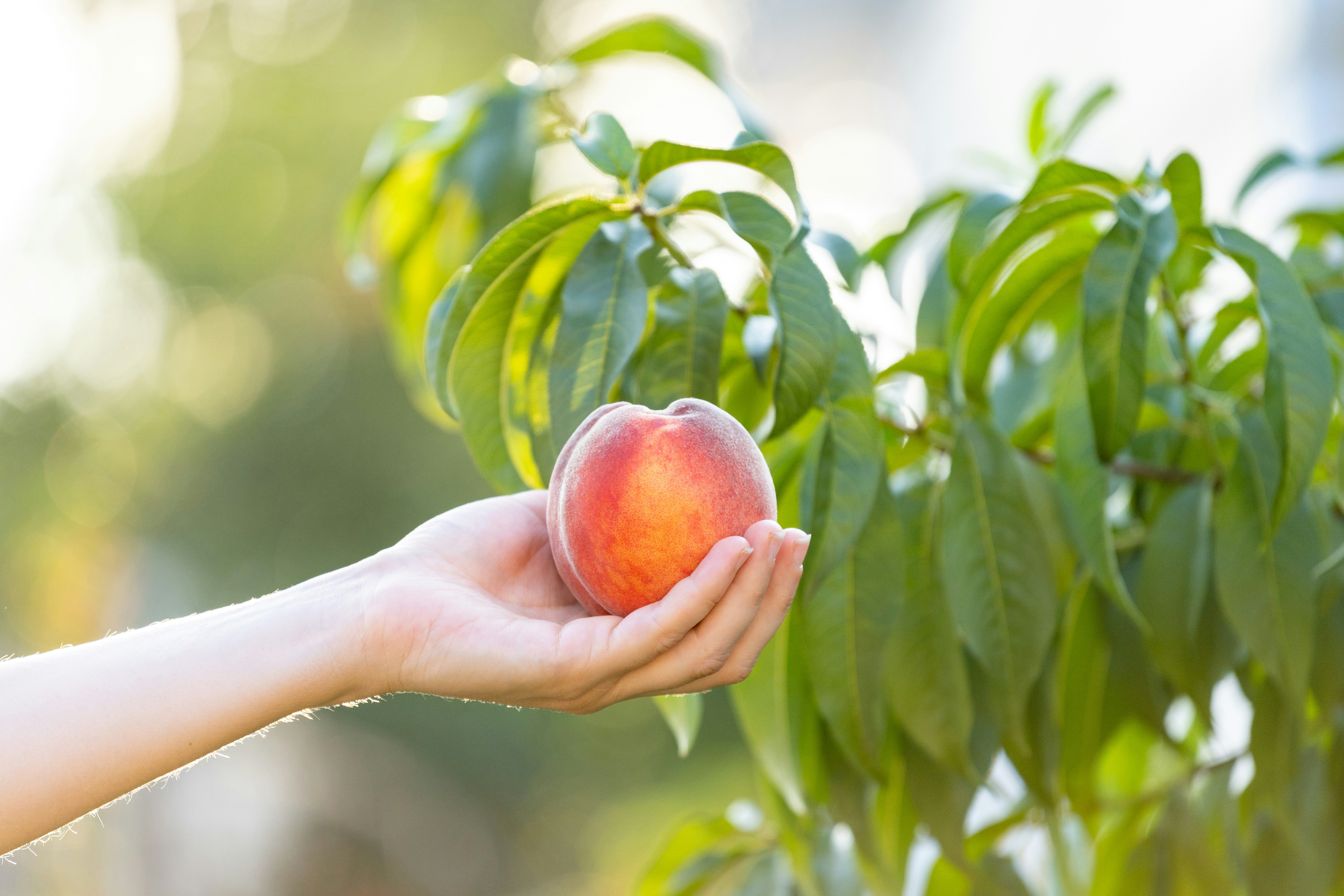Peach trees, known for their delicious and juicy fruit, are a lovely addition to any home orchard. Peaches are great for every gardener because they come in various sizes. Dwarf peach trees’ size ranges from 8 to 10 feet tall (about 2.5 to 3 meters), and semi-dwarf trees will grow 12 to 15 feet tall (about 3.5 to 4.5 meters). Both dwarf and semi-dwarf can be grown in containers, meaning you can have sweet summer peaches off your patio!
No matter what size peach tree you have, it is still susceptible to pests and diseases. One disease, peach leaf curl, can be especially frustrating. If you have been battling leaf curl or want to avoid it, there are steps you can take in the winter to help prevent it from taking hold in the spring.
What is Peach Leaf Curl?
Peach leaf curl is caused by the fungus Taphrina deformans. This fungus first appears as red spots on young leaves in the spring. Soon after, those spots become stiff, and the leaf curls up. Eventually, they turn yellow or brown. The leaves can stick around but more often the infected leaves fall off the tree. This fungus also affects new green shoots, which can affect the tree’s overall growth if the fungus isn’t controlled. With all of the leaves dying off, it is nearly impossible for the fruit to grow properly. The bad news doesn’t end with a fruitless summer: the fungus spores overwinter on the tree’s bark, where they wait to be revived by spring rains. The cycle begins again.
Peaches aren’t the only fruits affected by this problem; nectarines, almonds, and some apricots can also be affected.
Where Can You Find Peach Leaf Curl Fungus?
The peach leaf curl fungus spreads very quickly in areas that have cool, wet, and humid springs. Places in the USA, like the Midwest, parts of the East, and especially the Pacific Northwest, struggle with peach leaf curl. Other places like Canada and the United Kingdom also have trouble with this plant disease. Even areas that usually have spring temperatures above 70 degrees F (21 degrees C) can have a peach leaf curl problem if they get a stretch of daytime highs in the 50’s-60’s (F), ( 10-15 C) and humid weather.
Since the fungus sits on the bark before the leaves and buds emerge, winter is the best time to act to prevent or control an infection.
Peach Leaf Curl Resistant Varieties
The saying that “prevention is better than the cure” applies to peach trees, too. Some varieties are more resistant, although they are not entirely immune to the disease. Keep a close eye on newly planted trees; until they get established, they are still susceptible. If you’re adding a peach tree to your garden and live in an area with cool and wet springs, try to find one of these varieties:
- Avalon Pride- dwarf
- Betty- dwarf
- Frost- dwarf
- Mary Jane- dwarf
- Oregon Curl-Free- semi-dwarf
- Salish Summer-semi-dwarf
Treatment
If you are experiencing a leaf curl outbreak during the spring or summer, there is not much you can do at the moment. The leaves will most likely drop off, and new healthy leaves will return. As long as it’s warm enough during the summer, the leaves will not be affected again this season. What you should do is remove and destroy any of the infected leaves. You’ll need to wait until fall to begin treatments.
Fungicide
After the leaves have dropped in the fall, you can apply the first fungicide treatment. A popular non-toxic option for the home gardener is a copper fungus spray. Sometime in November, spray the tree according to the directions. Spay again in January and then one final time in February. We want to spray before the buds start emerging. It’s important to note that even though copper spray is considered non-toxic, over time, too much copper can become toxic to plants. It also seems that copper spray is at its most effective when used as a preventive.
Shelter
Sometimes, spraying a tree isn’t enough. My trees had a bad case of peach leaf curl over two seasons. It was so frustrating, but what finally worked for me was sheltering my trees in the winter. I had 2 dwarf varieties growing in the ground. After treating them with copper spray throughout the winter, I dug them up while they were dormant and potted them up. I moved them into a cold frame to protect them from the rain. I kept them as dry as possible while they were dormant. If you don’t have a dry cover or don’t want to move trees in the ground, wrap your trees in a clear plastic draping.
I’ve read that some gardeners plant peaches and nectarines in front of a wall to help with heat retention and make it easier to pin plastic over the trees in winter.
Remove Leaves
Even with shelter, you still might have some infected leaves; remove and destroy any infected leaves immediately.
If you’re feeling so frustrated with peach leaf curl that you’re ready to dig up your trees, I know exactly how you feel. I’ve been there. But I encourage you to try the covering method before throwing in the towel. You might thank yourself when biting into a homegrown peach this summer.
